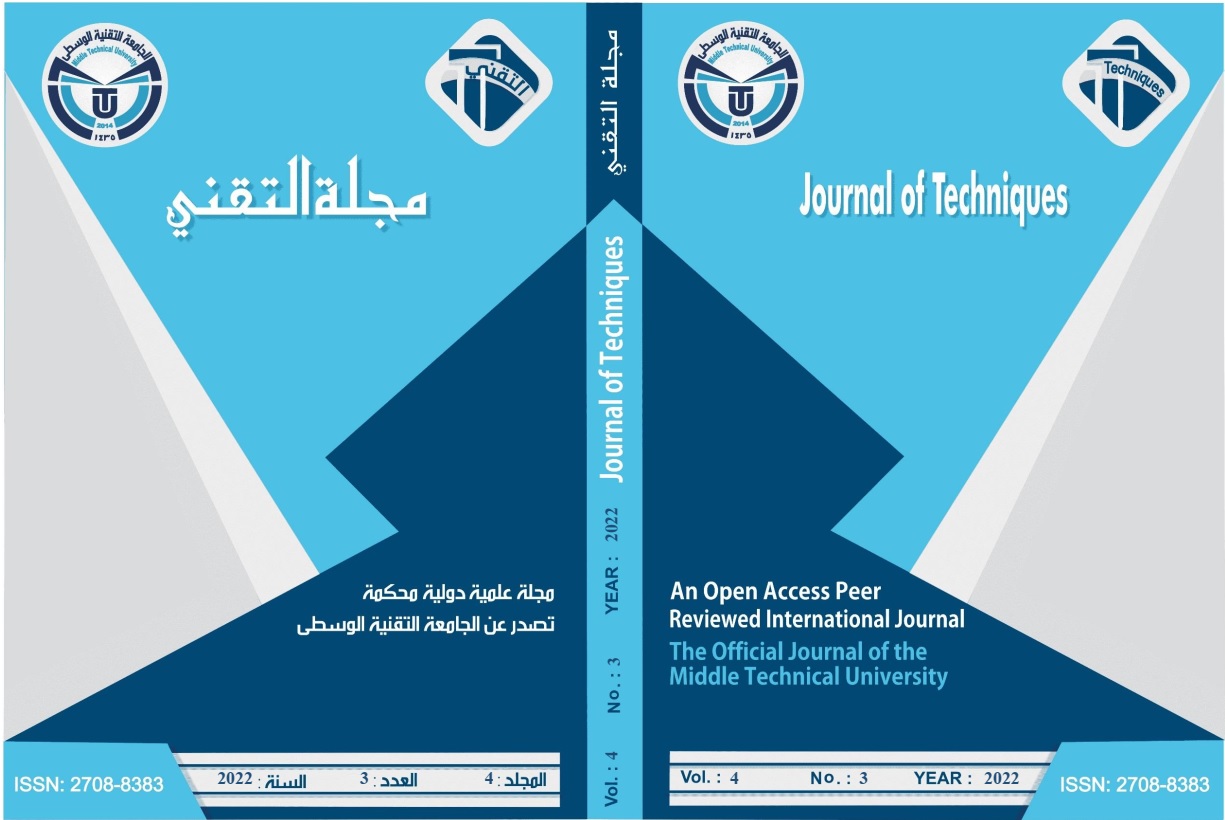The Comparison and Correlation of Serum Levels of Insulin and Na+/ K+ Atpase In Type 2 Diabetes Mellitus (T2DM) And Non-Diabetes Mellitus Individuals
DOI:
https://doi.org/10.51173/jt.v4i3.540Keywords:
Type 2 Diabetes Mellitus (T2DM), Insulin, Na /K ATPase, Hyperglycemia, Beta-cellAbstract
Type 2 Diabetes Mellitus (T2DM) is a chronic metabolic condition characterized by hyperglycemia that persists. Diabetes mellitus can cause damage to multiple organ systems, leading to the development of severe and life-threatening health issues, due to decreased insulin secretion, resistance to peripheral insulin effects, or both.
Objective: the comparison and correlation of serum levels of insulin and Na+/ K+ ATPase in T2DM and Non-Diabetic patients.
Material and methods: A case-control study was carried out in the max cure diabetes center and Al-Zahra Teaching Hospital in the city of AL-Kut, Iraq. Including 114 patients divided into 54 patients of T2DM in addition to 60 individuals as control (male and female), ages ranging from (20-70 years) from November 2021 –to March 2022. It was the measurement of serum Na+/K+ATPase and insulin level.
Results: In the comparison of insulin levels in Type 2 Diabetes Mellitus (T2DM) and healthy control group, serum insulin was found to be significantly decreased (p value<0.005) and Na+/K+ ATPase significantly decrease with a (p value<0.001) in diabetics as compared to control group. The correlation was positive and significant between the serum Na+/K+ ATPase and insulin.
Conclusions: serum insulin and Na+/K+ ATPase showed a significant decrease in diabetics as compared to the control group. Whereas a significant positive correlation is obtained between the parameters.
Downloads
References
Gillen JB, Estafanos S, Govette AJAP, Nutrition,, Metabolism. Exercise-nutrient interactions for improved postprandial glycemic control and insulin sensitivity. 2021;46(8):856-65.
Care ADAJD. Diagnosis and classification of diabetes mellitus. 2010;33(Supplement_1): S62-S9.
Hantzidiamantis PJ, Lappin SL. Physiology, glucose. StatPearls [Internet]: StatPearls Publishing; 2021.
Baynes HW, Mideksa S, Ambachew SJA. The role of polyunsaturated fatty acids (n-3 PUFAs) on the pancreatic β-cells and insulin action. 2018;7(2):81-7.
Johansson U, Rasmusson I, Niclou SP, Forslund N, Gustavsson L, Nilsson B, et al. Formation of composite endothelial cell–mesenchymal stem cell islets: a novel approach to promote islet revascularization. 2008;57(9):2393-401.
CHANDRA K, SINGH P, DWIVEDI S, Jain SJJoC, Research D. Diabetes Mellitus and Oxidative Stress: A Co-relative and Therapeutic Approach. 2019;13(5).
Suhail MJJocmr. Na+, K+-ATPase: ubiquitous multifunctional transmembrane protein and its relevance to various pathophysiological conditions. 2010;2(1):1.
Hossain KR, Clarke RJJBR. General and specific interactions of the phospholipid bilayer with P-type ATPases. 2019;11(3):353-64.
Morth JP, Pedersen BP, Buch-Pedersen MJ, Andersen JP, Vilsen B, Palmgren MG, et al. A structural overview of the plasma membrane Na+, K+-ATPase and H+-ATPase ion pumps. 2021;12(1):60-70.
Pirahanchi Y, Aeddula NR. Physiology, sodium potassium pump (Na+ K+ pump). 2019.
Pirahanchi Y, Jessu R, Aeddula NR. Physiology, sodium potassium pump. StatPearls [Internet]: StatPearls Publishing; 2021.
Zhu M, Cao L, Xiong S, Sun H, Wu Z, Bian J-SJSt, et al. Na+/K+-ATPase-dependent autophagy protects brain against ischemic injury. 2020;5(1):1-3.
Primeau JO, Armanious GP, Fisher MLE, Young HSJMpcs, function. The sarcoendoplasmic reticulum calcium ATPase. 2018:229-58.
Waugh DTJIjoer, health p. Fluoride exposure induces inhibition of sodium-and potassium-activated adenosine triphosphatase (Na+, K+-ATPase) enzyme activity: Molecular mechanisms and implications for public health. 2019;16(8):1427.
Mthembu SX, Mazibuko-Mbeje SE, Ziqubu K, Nyawo TA, Obonye N, Nyambuya TM, et al. Impact of physical exercise and caloric restriction in patients with type 2 diabetes: Skeletal muscle insulin resistance and mitochondrial dysfunction as ideal therapeutic targets. 2022:120467.
Wyckelsma VL, Perry BD, Bangsbo J, McKenna MJJJoAP. Inactivity and exercise training differentially regulate abundance of Na+-K+-ATPase in human skeletal muscle. 2019;127(4):905-20.
Al-Numair KS, Veeramani C, Alsaif MA, Chandramohan GJPb. Influence of kaempferol, a flavonoid compound, on membrane-bound ATPases in streptozotocin-induced diabetic rats. 2015;53(9):1372-8.
Balaji R, Duraisamy R, Kumar MJDIT. Complications of diabetes mellitus: A review. 2019;12(1).
Campbell JE, Newgard CBJNrMcb. Mechanisms controlling pancreatic islet cell function in insulin secretion. 2021;22(2):142-58.
Chen C, Cohrs CM, Stertmann J, Bozsak R, Speier SJMm. Human beta cell mass and function in diabetes: Recent advances in knowledge and technologies to understand disease pathogenesis. 2017;6(9):943-57.
Maguire D, Talwar D, Shiels PG, McMillan DJCnE. The role of thiamine dependent enzymes in obesity and obesity related chronic disease states: a systematic review. 2018;25:8-17.
Burhans MS, Hagman DK, Kuzma JN, Schmidt KA, Kratz MJCP. Contribution of adipose tissue inflammation to the development of type 2 diabetes mellitus. 2018;9(1):1.
Gallwitz B, Kazda C, Kraus P, Nicolay C, Schernthaner GJAd. Contribution of insulin deficiency and insulin resistance to the development of type 2 diabetes: nature of early stage diabetes. 2013;50(1):39-45.
Abosheasha MA, Zahran F, Bessa SS, Mohamed TMJRJOPB, SCIENCES C. Na+/K+-ATPase activity as a potential biomarker for. type 2 diabetes mellitus. 2018;9(2):1227-31.
Vague P, Coste T, Jannot M, Raccah D, Tsimaratos MJEdr. C-peptide, Na+, K+-ATPase, and diabetes. 2004;5(1):37-50.
Noor S, Mohammad T, Ashraf GM, Farhat J, Bilgrami AL, Eapen MS, et al. Mechanistic insights into the role of serum-glucocorticoid kinase 1 in diabetic nephropathy: A systematic review. 2021;193:562-73.

Downloads
Published
How to Cite
Issue
Section
License
Copyright (c) 2022 Karar Kazem Mohammed, Ahmed Ghazi Sabbar, Haider Hafid Hmeash

This work is licensed under a Creative Commons Attribution 4.0 International License.
















